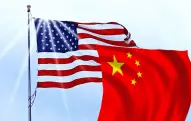China Pursues New Markets Following Trump's Tariffs
In response to escalating trade tensions, the Chinese government has unveiled a range of retaliatory measures against the United States. On April 4, 2025, China announced an import tariff of 34% on American goods, mirroring the tariffs imposed by former President Donald Trump during his administration.
As part of its response, Beijing has blacklisted 11 American companies, effectively prohibiting any commercial interactions with Chinese firms. Furthermore, China has restricted the export of rare minerals that are pivotal to the U.S. technology sector.
In addition to these measures, the Chinese government plans to lodge a complaint against the tariffs imposed by Trump with the World Trade Organization (WTO), although the agency has been largely ineffective since the onset of the trade war.
China stands as the second-largest trading partner for the United States, with Chinese exports to the U.S. reaching approximately $420 billion last year, while imports from the U.S. totaled around $140 billion. Trump has since criticized China's actions as misguided, suggesting that the Chinese authorities are reacting out of panic.
With U.S. ports becoming increasingly isolated from global markets, there is growing concern that Chinese manufacturers will seek to flood alternative markets in a bid to manage excess production capacity. Analysts at Citigroup have projected that the ongoing trade conflict could negatively impact China's GDP by as much as 2.4% this year alone.
In light of these developments, China is now focused on strengthening trade relationships with European nations, despite the reluctance of European leaders due to China's support of Russia in the ongoing conflict in Ukraine. Most of China's surplus products are expected to be redirected towards Asian neighbors, Latin America, and Africa, regions where China has already established significant investment ties.









































